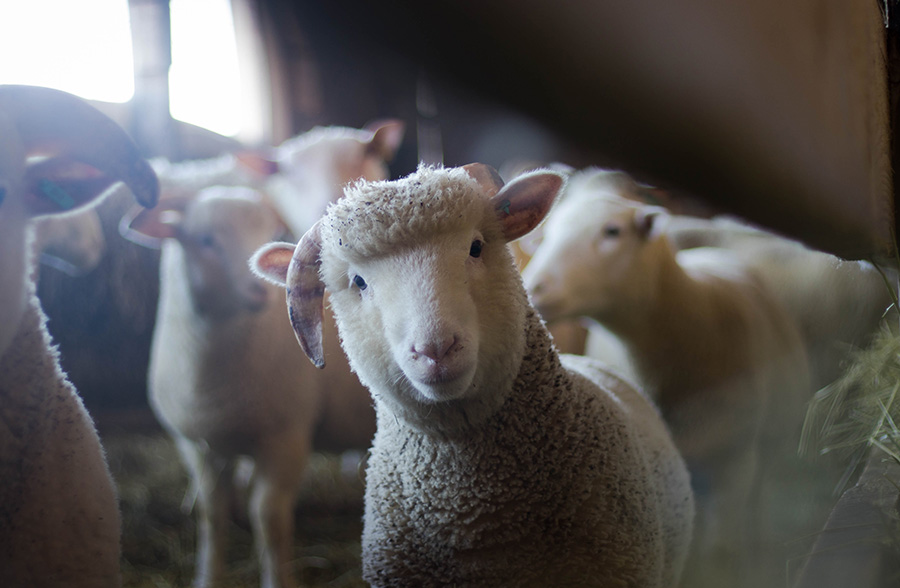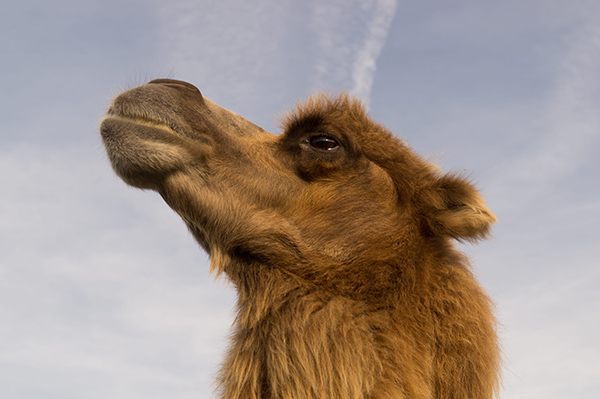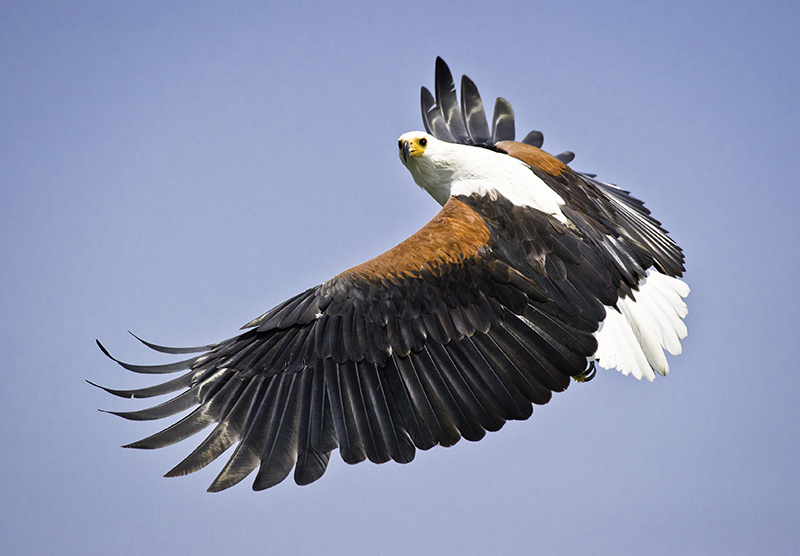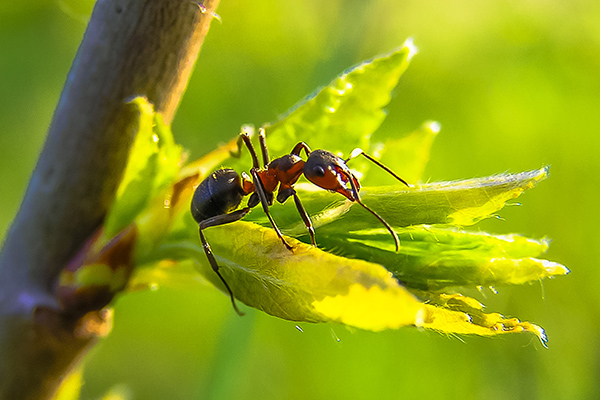Articles
Eid Al-Adha and animal welfare in islam
Article author: Inés Eléxpuru - FUNCI
Date of publication of the article: 24/06/2023
Year of publication: 2023
Article theme: Corán, Halal, Islam, Quran, Quran, Religions, Religions.
On July 29th, we have just attended the Eid al-Adha, or the so-called Feast of the Sacrifice, which, in the Muslim-majority world, and especially in the Maghreb, acquires surrealist overtones in these times.
It is a religious festival, related to the Hajj, or pilgrimage to Mecca. It celebrates the will and absolute dedication of the prophet Ibrahim, Abraham, the “intimate friend of God” according to Islamic tradition, to the designs of his Creator. According to the Koran, Ibrahim received in a dream the order to sacrifice his son Ishmael, to which both submitted without opposition. When Ishmael was prostrate on the ground about to be sacrificed, God sent a ram to replace him, as a sign of approval of their unfailing determination to please Him.
We will not fail to point out that, according to the Koranic tradition, it was only a dream.
The tradition related to the sacrifice of Ishmael (or Isaac, according to Christianity), is common to the three monotheistic religions, although with different nuances. However, only Muslims celebrate it.
Ibrahim and his son then began the construction of the Kaaba, in Mecca, in order to establish a monotheistic cult. The ritual of the Hajj as it is known today was established around it. One of the conditions of the pilgrimage is the sacrifice of a lamb, the meat of which is fed to the needy. This last point is essential in the festival of Eid al-Adha, or Great Feast.
Omero Marongiu-Perria, a French sociologist and advocate of animal rights in Islam, argues in his book L’islam et les animaux that “the sacrifice of the Eid al-Kebir is not an Islamic obligation” (pp. 77-92). As he explains, the first Muslims practiced the sacrifice only to redistribute food among the needy, a thesis that is increasingly held by scholars.
“And we have made for you camels as part of the rites of Allah, in them you have good. Remember the name of Allah upon them when they are lined up and once they have fallen on their sides; then eat from their meat and feed the needy and the beggars. Thus have we subjugated them to you that perhaps you might be grateful” (Koran, 22:36).
وَٱلْبُدْنَ جَعَلْنَـٰهَا لَكُم مِّن شَعَـٰٓئِرِ ٱللَّهِ لَكُمْ فِيهَا خَيْرٌۭ ۖ فَٱذْكُرُوا۟ ٱسْمَ ٱللَّهِ عَلَيْهَا صَوَآفَّ ۖ فَإِذَا وَجَبَتْ جُنُوبُهَا فَكُلُوا۟ مِنْهَا وَأَطْعِمُوا۟ ٱلْقَانِعَ وَٱلْمُعْتَرَّ ۚ كَذَٰلِكَ سَخَّرْنَـٰهَا لَكُمْ لَعَلَّكُمْ تَشْكُرُونَ ٣٦
The tradition related to the sacrifice of Ishmael (or Isaac, according to Christianity), is common to the three monotheistic religions, although with different nuances. However, only Muslims celebrate it.
In certain countries, especially those of the Maghreb, with a high rate of unemployment and social destructuring, this feast, which supposedly obliges each family to sacrifice a lamb, has become for many a nightmare. What should commemorate Ibrahim’s unfailing faith, serve to help the unprotected and be a source of family joy, is turning from year to year into a source of social and family tension for those who cannot afford to buy the famous ram, whose price has doubled in just two years, surpassing the average salary of a Moroccan, Algerian or Tunisian citizen. In Morocco, on the feast of 2023, a good-sized lamb has reached 4,500dh (about 445 €).
Neither the Prophet nor the first Caliphs, Abubaker and Omar, put into practice this ritual that obliges each family to sacrifice a ram, especially in times of hardship and inequality.
The social and family pressure to acquire a large lamb capable of competing with the neighbor’s, turns this festivity into a tragicomedy typical of the picaresque of the seventeenth century for those who do not have sufficient means.
 Here’s a clear example. In 2021, ads appeared in Tunisia on social media urging them to rent a fat and lustrous lamb to show to the neighborhood. It must then be taken to the slaughterhouse as if it were to be slaughtered, and the customer is then refunded a portion of the down payment contributed. This sad trend could be replicated in other countries due to the social aspects that this festivity acquires from year to year.
Here’s a clear example. In 2021, ads appeared in Tunisia on social media urging them to rent a fat and lustrous lamb to show to the neighborhood. It must then be taken to the slaughterhouse as if it were to be slaughtered, and the customer is then refunded a portion of the down payment contributed. This sad trend could be replicated in other countries due to the social aspects that this festivity acquires from year to year.
Animal welfare
And what to say, of course, about animal welfare, totally trampled, against all Islamic ethics, transparent and forceful in this regard. What in rural areas is or was a feast in which the lamb was acquired in good time, raised and pampered in the family environment, canonically slaughtered to avoid any suffering, has now become a last-minute obstacle course, in which people are in debt and anxiously go to the cashiers (this year, it seems, the cashiers in Morocco were completely emptied). Once the money is in the pocket, often the result of a bank loan with interest (something paradoxically forbidden in Islam), the “critter” is acquired in conditions of dubious hygiene and no respect for its welfare, and is violently introduced in the hood of the car or on the motorcycle, sharing a seat with the driver and, if possible, a relative. Needless to say, the police turn a blind eye.
Despite state campaigns in favour of a hygienic and “dignified” death (by experienced slaughterers or with perfectly sharp implements), it is doubtful that this will happen in most cases. In Morocco, the King slaughters a beautiful specimen for his family, in a ceremony broadcast live, while another person in his entourage symbolically slaughters another for the rest of the community. Something that should serve as an example, and very similar to what the Prophet of Islam himself did in the 7th century, which unfortunately no one puts into practice today.
Neither the Prophet nor the first Caliphs, Abubaker and Omar, put into practice this ritual that obliges each family to sacrifice a ram, especially in times of hardship and inequality.
But what people will say and “traditions” have a thick skin in the Mediterranean culture…
The ethic of sacrifice
Islam strictly forbids killing except for the need for food. And sacrifice has its own ethics.
The slaughtered animal must not be lactating, nor must it be killed in front of any other animal to avoid the latter’s suffering. It is imperative that the knife is sharpened and a clean cut is made, severing the glottis and jugular vein in one blow so that death is instantaneous and painless.
The animal, which will have been previously cared for and fed properly, will be placed facing Mecca, which undoubtedly lends a cultural value to the sacrifice, far from the coldness and remoteness of current slaughterhouse techniques, which in a certain way help to trivialize the aseptic and unlived death of the animal, and incite the consumption of more meat than necessary.
The importance of a dignified treatment and death of the animal is evident in numerous hadiths, or traditions attributed to the Prophet Muhammad:
On one occasion, the Prophet passed by a very emaciated camel. He said: “Fear Allah for these animals that cannot express themselves. If you ride them, ride them properly, and if you eat them, eat them properly [by feeding them well to ensure good health].” (Abu Dawud).” (Abu Dawud).
Islam strictly forbids killing except for the need of food. And sacrifice has its own ethics.
Said the Prophet: “Allah prescribes beneficence in all things. So, if you kill, do it rightly and if you slaughter, do it with care: sharpen the blade of your knife well and avoid the suffering of the beast.” (Sahih Muslim).
In another hadith, it is related that the Prophet saw a man sharpening the blade of his knife in front of an animal and remarked to him, “You should have done it before taking him to the slaughterhouse! Do you want to kill him twice?” (At-Tabarani).
 To avoid usury, speculation and animal abuse, convincing state measures should be adopted. For example, raising awareness about the non-obligation to slaughter one ram per family, regulating prices and prohibiting slaughter within the city walls, adapting outdoor spaces for the breeding, purchase and slaughter of animals in hygienic and dignified conditions. In these spaces the gifts destined to the underprivileged should be collected and the meat should be equitably distributed among them.
To avoid usury, speculation and animal abuse, convincing state measures should be adopted. For example, raising awareness about the non-obligation to slaughter one ram per family, regulating prices and prohibiting slaughter within the city walls, adapting outdoor spaces for the breeding, purchase and slaughter of animals in hygienic and dignified conditions. In these spaces the gifts destined to the underprivileged should be collected and the meat should be equitably distributed among them.
The human being as an animal
From a contemporary point of view we can see how, in 1977, the International League for Animal Rights recognized the Universal Declaration of Animal Rights. This declaration was recognized shortly thereafter, albeit in a non-binding form, by the United Nations Organization (UNO) and, in particular, by UNESCO. This guaranteed not only the protection of animals – those beings who have no voice to complain about human barbarity – but also highlighted the importance of their presence in our lives.
However, we see that Islam, sixteen centuries earlier, not only stipulated these rights, but also granted animals the status of living beings on the same level as the rest of the beings of Creation, including humans:
“There is not a creature of the earth, nor a bird that flies with its wings, that does not form communities similar to yours. We have omitted nothing in the Book. Then shall they be gathered together to return to their Lord” (Koran, 6:38).
وَمَا مِن دَآبَّةٍ فِي الأَرْضِ وَلاَ طَائِرٍ يَطِيرُ بِجَنَاحَيْهِ إِلاَّ أُمَمٌ أَمْثَالُكُم مَّا فَرَّطْنَا فِي الكِتَابِ مِن شَيْءٍ ثُمَّ إِلَى رَبِّهِمْ يُحْشَرُونَ
This important ayah gives us the idea of the holistic perception existing in Islam among living beings: humans, jinn and animals, often named together in the sacred text.
Animals are capable of participating in a certain form of spirituality and even, according to some scholars such as the 13th century Andalusian exegete al-Qurtubi, of possessing consciousness (Tafsir al-Qurtubi, pp. 34-35).
The Koran puts it beautifully: “Do you not see that Allah is glorified by all those in the heavens and on earth, like the birds with their wings spread out in the air? Everyone knows his own prayer and his own way of glorifying. Allah knows what they do” (24-41).
أَلَمْ تَرَ أَنَّ ٱللَّهَ يُسَبِّحُ لَهُۥ مَن فِى ٱلسَّمَـٰوَٰتِ وَٱلْأَرْضِ وَٱلطَّيْرُ صَـٰٓفَّـٰتٍۢ ۖ كُلٌّۭ قَدْ عَلِمَ صَلَاتَهُۥ وَتَسْبِيحَهُۥ ۗ وَٱللَّهُ عَلِيمٌۢ بِمَا يَفْعَلُونَ ٤١
On the other hand, the importance of animals as created beings is evident in the Holy Book, in which numerous suras and ayahs allude to them as signs that lead to reflection and gratitude for their beauty and usefulness. Several suras bear animal names: The Cow, The Herds, The Bees, The Ants, The Spider, The Steeds, The Elephant… not to mention the mythical and semi-sacred charge of certain animals such as the Prophet’s she-camel and Solomon’s hoopoe.
As we can see, animals are of great importance in Arab-Islamic culture, especially in its beginnings, if we consider their close presence in the daily life of humans.
Until the Abbasid period, philosophers and theologians generally regarded man as just another animal (ḥayawān, Arabic for “the very living”). Humans did not appear, as in Renaissance Europe, in their anthropocentric form in the face of other living beings, but simply as part of them. Marongiu-Perria, in L’Islam et les animaux (pp-38 and 175), criticises the fact that, under the influence of the West since the 19th century, animals have fallen into the reification of animals, although Islamic sources make it clear that they are also a source of satisfaction and benefit to humans, despite urging good treatment of them.
Animals are capable of participating in a certain form of spirituality and even, according to some scholars such as the 13th century Andalusian exegete al-Qurtubi, of possessing consciousness (Tafsir al-Qurtubi, pp. 34-35).
According to Catherine Mayeur-Jaouen, one of the authors of the interesting collective book L’animal en Islam, the distance between man and animal is much smaller in the Islamic tradition than in the Christian tradition, for example. “All the sources of Muslim knowledge on animals affirm, to a greater or lesser extent, the obsession with the classification of living beings, where man, the superior animal in a hierarchical gradation, cannot be separated absolutely from the other animals” (p. 14).
Animal compassion in Islam
Islam, not only through the Koran but also through the example of its Prophet, calls for unequivocal respect for animals through compassionate treatment. There are numerous hadiths that allude to their rights.
Ahmad and Abu Dawud relate from Abdullah ibn Ja’far, that the Messenger of God entered the premises of a man of the Ansar (the Muslims of Medina) and found a camel. The animal, when it saw the Prophet shed tears. The Messenger of Allah went to it and wiped the back of its head, comforting the animal. Then he asked: “Whose camel is this, and who is its owner? A boy of the Ansar came and said: “It is mine, O Messenger of Allah”. The Prophet said: “Do you not fear Allah in this beast which He has given you? It complained against you, because you let it starve and burden it with much work”.
Similarly, the Prophet forbade the use of horses “as saddles on which to converse in the streets and marketplaces”. “It may be that the horse is better than its rider”. A totally revolutionary statement for the time, when until recently even human beings were inheritable property.
Even the lives of seemingly insignificant ants, organised in communities like humans, are a source of respect in the sources of Islam:
This is stated in the following hadith: The Messenger of Allah taught us: “One day, a prophet was resting under a tree when he was stung by an ant, so he ordered his baggage to be taken out from under [the tree] and the anthill to be burnt. Allah then revealed to him: ‘A single ant has stung you, but you have destroyed a nation that glorifies Allah…'”. (Sahih Bukhari).
On the other hand, the Prophet of Islam stated that animals would have the opportunity to complain to their Creator on the Day of Judgement about their mistreatment, both among themselves and by jinn and humans. The reward in the hereafter for those who have shown mercy to animals is also well known.
The Prophet forbade the use of horses “as saddles on which to converse in the streets and marketplaces”. “It may be that the horse is better than its rider”.
Interestingly, both the Koran and the Hadiths show animals as discerning beings capable of expressing themselves:
In Sura 27:18, the Koran describes how the army of Sulayman (Solomon) set out on a march until, on reaching the valley of the ants, one of the ants said, “Ants! Enter your dwellings lest Sulayman and his armies crush you unawares.”
حَتَّىٰٓ إِذَآ أَتَوْا۟ عَلَىٰ وَادِ ٱلنَّمْلِ قَالَتْ نَمْلَةٌۭ يَـٰٓأَيُّهَا ٱلنَّمْلُ ٱدْخُلُوا۟ مَسَـٰكِنَكُمْ لَا يَحْطِمَنَّكُمْ سُلَيْمَـٰنُ وَجُنُودُهُۥ وَهُمْ لَا يَشْعُرُونَ ١٨
Bukhari and Muslim relate from Abu Huraira (Arabic for ‘the father of the kitten’) that the Prophet said: “While a man was driving a cow, he mounted her and struck her; she said: ‘We were not created for that, but for ploughing’.
After the Prophet
This mercy was, unsurprisingly, perpetuated during the rule of the early caliphs.
Thus, Omar ibn Al-Khattab is reported to have said: “If a lost sheep under my care were to die on the banks of the Euphrates, I would expect Allah the Exalted to ask me about it on the Day of Resurrection”. (Hilyat al-Awliya).
Bukhari and Muslim narrate that Ibn Omar (the son of the caliph Omar) once passed by some Quraysh youths who were using a bird as a target to shoot their arrows for entertainment. When they saw Ibn Omar, they scattered. He exclaimed, “Who did this? May Allah curse whoever did this, for the Messenger of Allah, peace and blessings be upon him, cursed whoever takes any living thing as a target!”.
And so, this care and respect for the animal world has been perpetuated for centuries, right up to Ottoman times. Indeed, the care of wild birds is still practised in Turkey, where the Waqf (Islamic charitable fund) allocates annual resources to feed them in their natural habitats during the snowy seasons.
These and many other elements allow us to affirm that animal law was born in Islam in the 7th century, and that, beyond the obligatory compassion, the conservation of animal diversity is an unequivocal duty for the Islamic community.
References:
El Noble Corán, trad. Adbel Ghani Melara Navio.
L’Islam et les animaux, Omero Marongiu-Perria (dir.). Neuilly-sur-Seine, Atlande (avec la collaboration scientifique de l’association Droits des animaux), 2021.
L’animal en Islam, Mohammed Hocine Benkheira, Catherine Mayeur-Jaouen & Jacqueline Sublet. Paris, Les Indes Savantes, 2005.
Le bien-être animal en islam, Muslim Hands, 2022.
L’islam, une religion qui fait fi du bien-être animal ? La Revue des Religions, 2022
Les animaux, le Jour du Jugement, Centre Blog, 2011.
El Profeta y la misericordia con los animales, IslamHouse.com 2024.
Versículos sobre el animal, Versículos del Corán.






